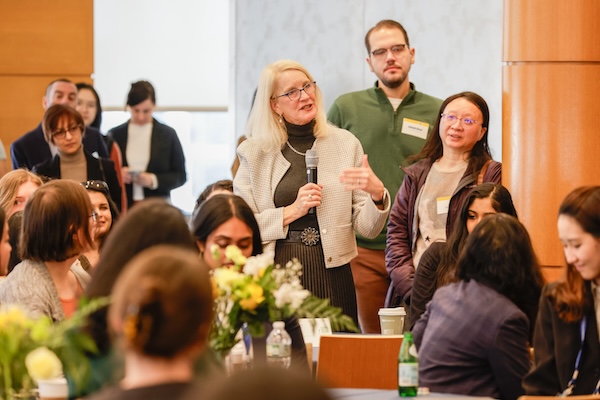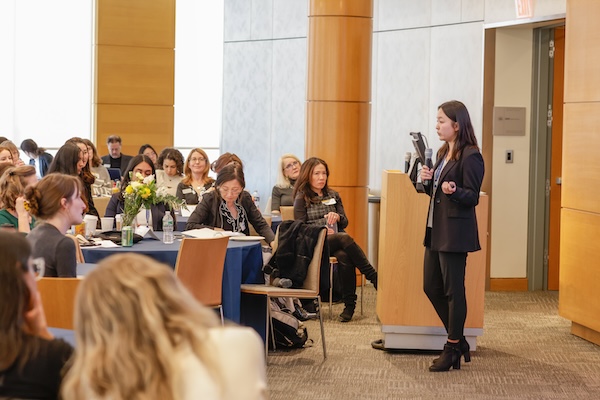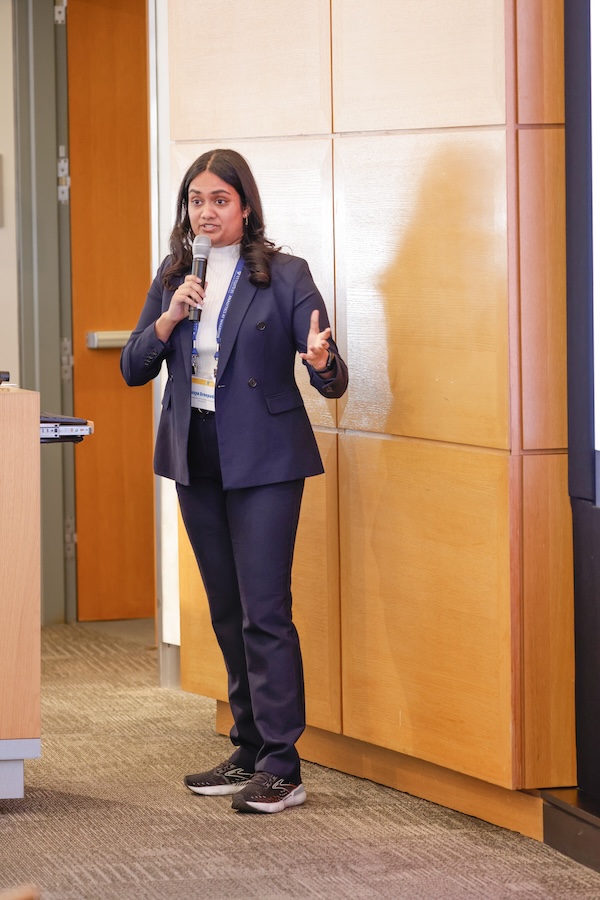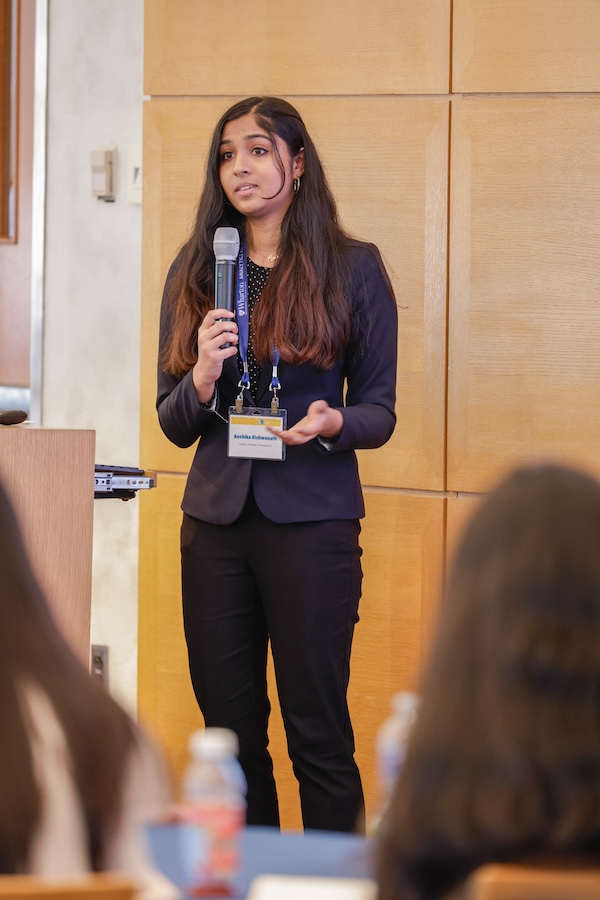
In Invisible Women: Data Bias in a World Designed for Men, Caroline Criado Perez notes that the default perspective for virtually all data collection and analysis is male. (Hence crash test dummies being designed to mimic male bodies, air conditioning systems relying on a model of the male metabolism, and women’s unique heart attack symptoms other than chest pain — like nausea and back pain — often going unrecognized, even by women experiencing them.)
Nearly a decade ago, a group of women at Stanford decided to address this issue by convening a one-day technical conference on data science; that meeting has now grown into a worldwide movement, with hundreds of sister conferences each year — a tradition in which Penn Engineering is proud to take part.
By 2030, Women in Data Science (WiDS), the non-profit that spun out of that early meeting, hopes to achieve 30% representation of women in data science globally. For Susan Davidson, Weiss Professor in Computer and Information Science (CIS) and a co-chair of the annual WiDS @ Penn conference, the benefits of participating in WiDS go beyond just networking. “To see women who are successful in your field is extremely encouraging,” says Davidson.

This year, Penn Engineering partnered with Analytics at Wharton (AAW) and the Penn Museum to co-host the fifth annual WiDS @ Penn conference, bringing together dozens of women from across the University and beyond to learn about the latest applications of data science in topics as diverse as online education and health care.
“It gave me the opportunity to not only show others what it means to be a data scientist,” says Lasya Sreepada, a doctoral student in Bioengineering, who presented her work studying early-onset Alzheimer’s disease using large data sets, “but also what it means to be a woman applying data science to integrate multiple disciplines spanning neuroscience, genomics and radiology.”
Penn Engineering students from all levels of their academic careers participated, from Aashika Vishwanath, a sophomore in CIS, president of the Wharton Undergraduate Data Analytics Club and senior data science consultant at Wharton Analytics Fellows, who shared her work developing an AI-powered teaching assistant, to Betty Xu, a master’s student in Electrical and Systems Engineering, who collaborated with the Wharton Neuroscience Initiative to study financial decision making. “Data can help us know the unknown in every field,” says Xu. “You can be a great data scientist no matter your background.”

The first day of the conference, which included a workshop and tour of the Penn Museum, focused on storytelling — in particular, how women, past and present, can and have used data to tell stories about the world. “Whatever our background or professions,” says Sarah Linn, Research Liaison at the Penn Museum, “our job is to pick up the pieces, the threads, the artifacts or data sets, and interpret them to provide the context and to weave them into a story that will resonate.”
At the Penn Museum, attendees traveled through time and the Museum’s vast collection to learn more about how women have interpreted the often sparse data of the archaeological record. “It was a light-bulb moment for me,” recalls Sreepada. Her tour group learned how Tatiana Proskouriakoff, a Russian émigré whose turn from architecture to archaeology started at the Penn Museum in the 1930s, first deciphered Mayan hieroglyphs by analyzing repeating patterns.
“That sparked a conversation about the use of AI not only in medicine,” says Sreepada, “but in other disciplines where we could potentially use image recognition software to better understand hieroglyphs or other texts that we don’t know much about — really thinking outside the box about what data science is and what it could be used for.”

In addition to providing a forum for students like Sreepada, Vishwanath and Xu to share their research, the conference presented each participant with an unparalleled opportunity to meet other women in data science. “WiDS gives women connections to many other women across the university,” says Davidson, “working on problems that could be important applications for their ideas or complementing what they’re working on.”
Indeed, Vishwanath had potential collaborators approach her immediately after her talk concluded. “I was able to ask them questions about their work and experiences as well,” she says. “Having all these people together, sharing the same mindset, and the chance to talk with them is an opportunity you wouldn’t simply find by attending school, going to classes and participating in club meetings.”
Last year, Vishwanath heard about WiDS through Joanna Yang, a senior studying statistics and data science at Penn and the emeritus president of Wharton Analytics Fellows, who spoke at the 2023 conference about her experience developing a tool for McDonald’s to analyze customer data. “She spoke about the chance to network and hear various female leaders discuss their work,” says Vishwanath. “I was incredibly inspired by the entire experience and knew I wanted to get involved with the 2024 conference.”

Penn Engineering faculty also took to the stage. Surbhi Goel, Magerman Term Assistant Professor in CIS walked the audience through the architecture behind tools like OpenAI’s ChatGPT, while Davidson led a panel of women from Penn Engineering, Wharton and industry to discuss the use of AI in education and health care.
Even after the event concluded, attendees stayed to continue their discussions. “Gender should never be a limit on pursuing your passion,” says Xu. “WiDS is a place to exchange ideas; other people’s passions can help you shape your own passion.”
